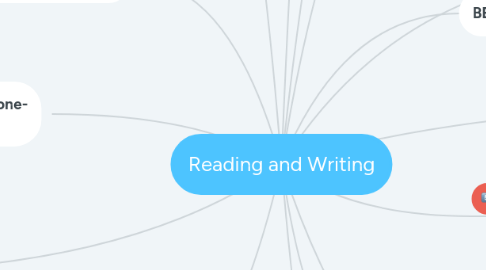
1. Nurturing Children's Oral Language Development
1.1. interactive read alouds
1.2. grand conversations
1.3. story retelling
1.4. story boards
1.5. learning a second language
1.5.1. Basic Interpersonal Communicative Skills
1.5.2. Cognitive Academic Language Proficiency
1.6. A child's ability to orally define words has a great impact on the future of that child's language development!
2. Fostering an Interest in Literacy
2.1. concepts about print and words
2.1.1. Children are able to notice things like being able to read from left to right and top to bottom, form sentences, and point to words to sound them out.
2.1.2. Once they grasp the concept in school, they're able to notice printed words and sentences in their environments.
2.2. routines to teach the alphabet
2.2.1. alphabet books, alphabet charts, environmental prints, letter books, letter frames, letter stamps, etc.
2.2.1.1. Provide activities that the students will enjoy and explain the importance that letter play in our everyday lives!
3. How Children Develop as Readers and Writers
3.1. Stage 1: Emergent Reading and Writing
3.1.1. This is when interest is developed! Young children are scribbling to develop their writing. They are being read to by parents and teachers.
3.2. Stage 2: Beginning Reading and Writing
3.2.1. This is when awareness grows and they are learning about phonemes! This includes interactive writing, choral reading, and minilessons.
3.3. Stage 3: Fluent Reading and Writing
3.3.1. These readers can now recognize hundreds of words and can automatically form sentences. They can decode and comprehend as well as write stories!
4. TOMPKINS READING
5. This is amazing!!!! Well done- Alicia :)
6. Make it interactive for the students like dramatic plays/acting it out!
7. BEAR READING
8. Characteristics of Emergent Stage
8.1. Writing and Spelling: scribbling/drawing, letter-like and random letters, salient or initial sounds, partial alphabet letter names, developmental spelling
9. Creating Classrooms for Early Literacy Learning
9.1. support emergent writing and spelling through demonstration and explanation
9.2. support emergent reading with interactive read-aloud, shared reading, predictable reading materials, print referencing, etc.
10. The Literacy Diet for Emergent Stage
10.1. 1. Oral language, concepts and vocab
10.2. 2. Phonological awareness
10.3. 3. Alphabet knowledge
10.4. 4. letter-sound knowledge or phonics
10.5. 5. concepts about print
10.6. 6. concept of word in text
11. Oral Language, Concepts, Vocab
11.1. classroom interactions
11.1.1. sophisticated synonyms, language in centers, read-alouds, etc.
11.2. concept sorts
11.2.1. categorize, extend concept sorts, assessing and monitoring vocabulary growth
